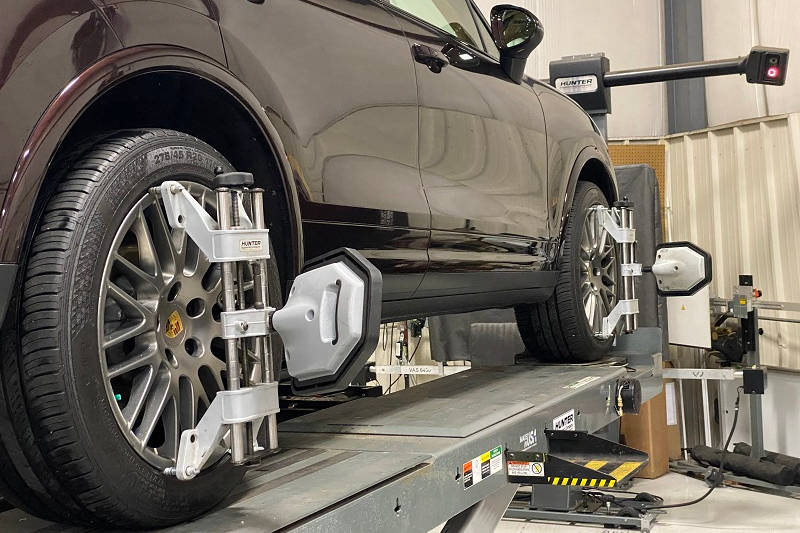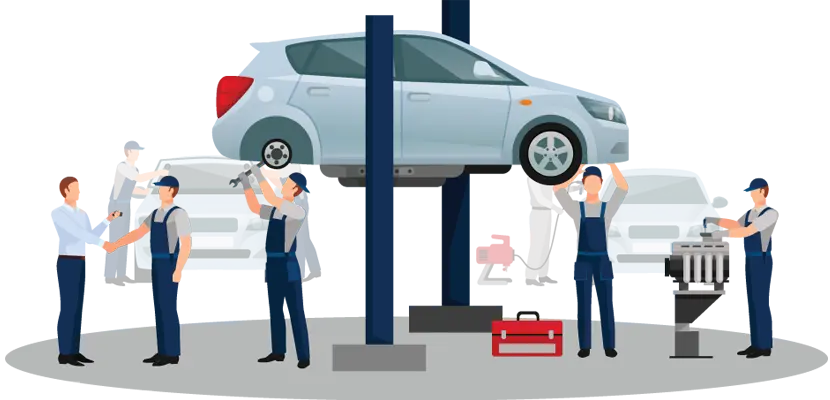Regular servicing and maintenance are crucial for keeping your car in optimal condition, especially considering the wear and tear from daily commutes on Indian roads, which often include potholes that can affect wheel alignment. Misaligned wheels can lead to various issues, and it's essential to address them promptly to avoid further damage. Here’s how to recognize if your car needs a wheel alignment:
1. Off-Centered Steering Wheel
The steering wheel should be perfectly straight when driving straight. If you notice that the car's logo on the steering wheel is tilted, it indicates a problem with the alignment. If the wheel is off-center by more than 2-3 degrees, it’s time for a service.

2. Road Test
On a straight, flat road, observe if your vehicle pulls to one side. While some natural drift might occur due to road crowning, significant effort needed to keep the steering straight suggests alignment issues.
3. Tyre Wear
Uneven tyre wear is a common sign of misalignment. Check your tyres for irregular wear patterns, as they can indicate that your wheels are not properly aligned.
Also Read: Five Essential Tips to Prevent Tyre Bursts and Car Fires During the Heatwave
4. Loose Handling
If your steering feels loose or unstable, it might be due to poor wheel alignment. Loose steering can cause the car to feel like it's not moving straight, requiring constant corrections.
5. Steering Doesn’t Return to Center
After turning, the steering wheel should naturally realign to the center. If it struggles to return to the center or feels obstructed, this could signal alignment problems.

6. Parked Alignment Check
You can manually inspect wheel alignment using a tape measure and level. The front tires should have a slight "toe-in" (angled inward), and measuring the distance between the front and rear centerlines can help identify alignment issues. The vertical alignment can also be checked with a level.
7. Check for Tyre Issues
Tyre problems, such as low air pressure, incorrect size, or wear, can mimic alignment issues. Ensure that your tyres are properly inflated and in good condition. For any tyre damage, consider a car tyre fitting service for replacement.
If you identify any of these signs, it’s advisable to visit a reputable car service center to have your wheel alignment checked and corrected.

Here are some frequently asked questions (FAQs) about wheel alignment:
1. What is wheel alignment?
Wheel alignment refers to the adjustment of a vehicle's wheels to ensure they are set to the manufacturer's specifications. Proper alignment ensures that the wheels are parallel to each other and perpendicular to the ground, which improves vehicle handling and tire longevity.
2. Why is wheel alignment important?
Proper wheel alignment is crucial for safe driving, better vehicle handling, and even tire wear. Misalignment can lead to uneven tire wear, poor handling, reduced fuel efficiency, and potentially unsafe driving conditions.
3. How do I know if my car needs a wheel alignment?
Signs that your car may need a wheel alignment include a steering wheel that is off-center, the vehicle pulling to one side, uneven tire wear, loose or unstable steering, difficulty in steering returning to the center, and issues with the alignment when checked with a tape measure and level.
4. How often should I check my wheel alignment?
It's a good practice to have your wheel alignment checked at least once a year or every 10,000 to 12,000 miles. Additionally, you should check alignment if you notice any of the signs of misalignment or after hitting a significant pothole or curb.
5. Can I perform a wheel alignment myself?
While basic alignment checks can be done at home with a tape measure and level, a professional wheel alignment requires specialized equipment and expertise. It's best to have a certified technician perform the alignment to ensure it meets manufacturer specifications.
Also Read: How to Know When Tyres Need to be Rotated or Changed?






_1721886564.webp)



